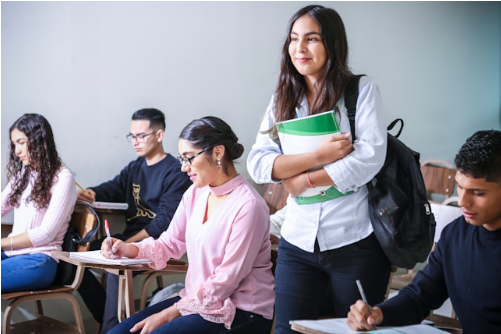Improving schools and boosting student engagement and growth is challenging due to the many factors in a school district’s decision-making process. Furthermore, implementing changes requires time, data collection, and research to assess their effectiveness.
Contents
Despite progress, pursuing additional improvements is an ongoing and never-ending process. However, over a five-year period, 62% of teachers and 81% of principals believe that school improvement initiatives positively impact schools. To aid in enhancing the educational experience, here are key areas worth considering for taking education to the next level:
1. Perform Routine Facility Inspections

Facility audits are essential for managing school sites of all sizes. Overlooking a thorough assessment of a building’s condition may result in safety hazards or deteriorating systems. Facility issues can negatively impact students’ educational experiences and raise public concerns about the school’s capability to meet necessary standards.
A recommended best practice is to use digital checklists during facility walkthroughs and establish regular preventive maintenance schedules for all critical equipment systems. In the event of a major issue, conducting a thorough review and implementing specific countermeasures is also advised to prevent future occurrences.
2. Foster a Welcoming Atmosphere
The ambiance of a school can dramatically influence students’ attitudes towards learning. Creating a welcoming atmosphere begins with simple acts like painting walls in cheerful colors and decorating hallways with student artwork.
Comfortable School Lockers can also make a big difference. Classrooms should be arranged to facilitate both individual and group work, allowing for flexibility in teaching styles and learning activities.
3. Improve Air Quality and Lighting
Often overlooked, air quality and lighting can significantly impact student performance. Schools should ensure proper ventilation and consider installing air purifiers to provide a clean and healthy environment.
Natural light is preferable, but in its absence, schools should use high-quality artificial lighting that mimics natural light. Good lighting reduces eye strain and improves focus, creating a better learning environment.
In a world increasingly driven by technology, the integration of digital tools in the classroom cannot be overstated. Modern classrooms need more than just traditional chalkboards and desks; they must be equipped with interactive whiteboards, high-speed internet, and educational software.
By incorporating technology, schools can provide a more engaging and dynamic learning environment. For instance, interactive whiteboards allow teachers to present lessons visually appealingly, fostering better understanding and retention. Furthermore, access to the internet opens up a treasure trove of resources for both teachers and students, enabling them to explore topics beyond the textbook.
4. Prioritize Safety and Accessibility
Last but certainly not least, ensuring the safety and accessibility of school facilities is paramount. Students should feel safe within their school premises, from secure entry points and surveillance systems to well-marked emergency exits. Regular safety drills and updated first-aid supplies are crucial elements that must not be neglected.
Accessibility is another critical factor. Schools must have ramps, elevators, and accessible restrooms to accommodate students with disabilities. Inclusive facilities ensure that every student has equal access to educational opportunities, regardless of their physical abilities.
Endnote
Improving school facilities is not just about bricks and mortar; it’s about creating environments where students can thrive academically, physically, and emotionally. As we invest in these improvements, we invest in our children’s and society’s future. Let’s make our schools places where every student can flourish.
 One app for all your study abroad needs
One app for all your study abroad needs














